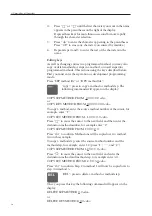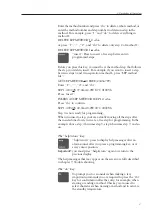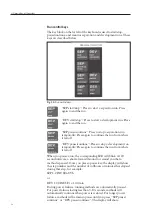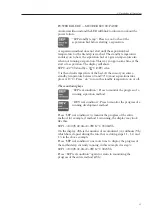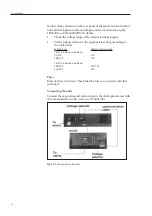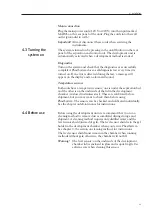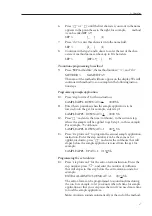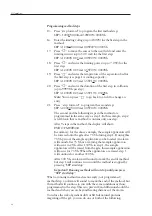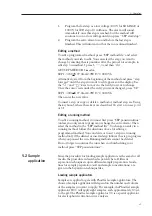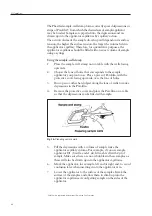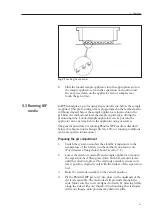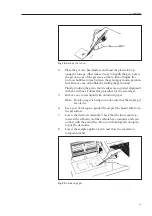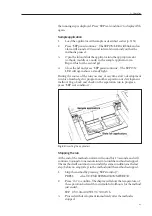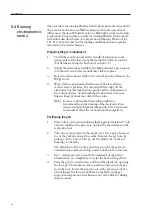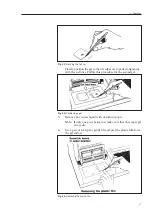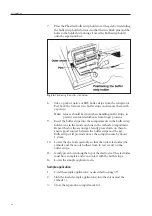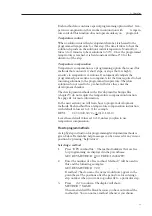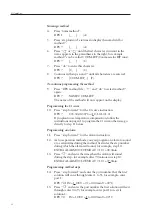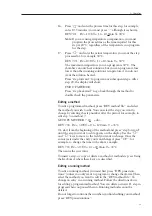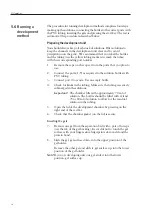
39
1.
Program the last step as a low voltage (100 V for SDS-PAGE or
1000 V for lEF) step of 0 volthours. The alarm will sound
immediately once this step is reached, but the method will
continue to run at low voltage until you press ” SEP start/stop”.
2.
Program the extra alarm to sound before the last step is
finished. This will inform you that the run is almost finished.
Editing a method
To edit a programmed method, press ”SEP method file” and select
the method you wish to edit. You can select the step you want to
change by entering the step number after the period, for example, to
edit step 3 in method 1 press 1, ”.”, 3 and then ”do”.
GET SEP METHOD 1.3 <do>
SEP 1.3 0300V 07.0mA 2.0W 15°C 0010Vh
Alternatively, start from the beginning of the method and press ”step
forward” until the step you want to edit appears on the display. Use
the ” ” and ” ” keys to move to the field you want to change.
Once the cursor rests under the entry you want changed, press ”CE”:
SEP 1.3 0000V 07.0mA 2.0W 15°C 0010Vh
Then enter the new value.
To insert a step or copy or delete a method or method step, see Using
the keyboard, where these keys are described. To start a run see p. 44
or 51.
Editing a running method
To edit a running method, you must first press ”SEP pause/continue”
(unless you only want to program or change the extra alarm). Then
select the method in the ”SEP method file”. To change an entry in a
running method, follow the directions above for editing a
programmed method. You can delete or insert a step in a running
method only if the deleted or inserted step follows the step in progress
when you paused the run. Running methods cannot be deleted.
Do not forget to continue the run when you finish editing your
method; press ”SEP pause/continue”.
Since the procedure for loading sample applicators is the same for all
media, the procedure is described separately here. Different
separation techniques require different sample preparation. Guide-
lines for sample preparation (salt and sample concentrations) are
given in the Separation technique files.
Loading sample applicators
Samples are applied to gels with PhastGel sample applicators. The
choice of sample applicator will depend on the number and volume
of the samples you want to apply. For example, the PhastGel sample
applicator 8/0.5 will apply eight samples, each approximately 0.5 µl,
to the gel. The PhastGel sample applicator TC is a special applicator
for electrophoretic titration curve analysis.
5.2 Sample
application
▼
▼
5. Operation


